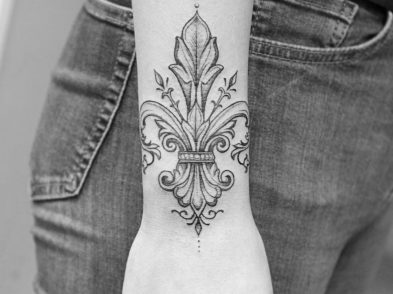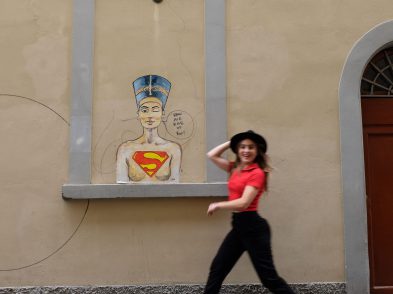In the vast world of wine, non-connoisseurs are wont to select a bottle with anything but quality in mind. Unsure of what makes a red rich or a white right, we may find ourselves choosing based on the price, a suggestion or even the label itself. Unsurprisingly, we might be attracted to an intriguing label or a unique design, unsure and unconcerned about whether or not the contents within hold true to the beauty of the exterior. When first impressions aren’t dictated by taste or smell, it is sight that draws us in. But who are the designers behind the etichette that captivate our gaze as we scan the wine aisle?
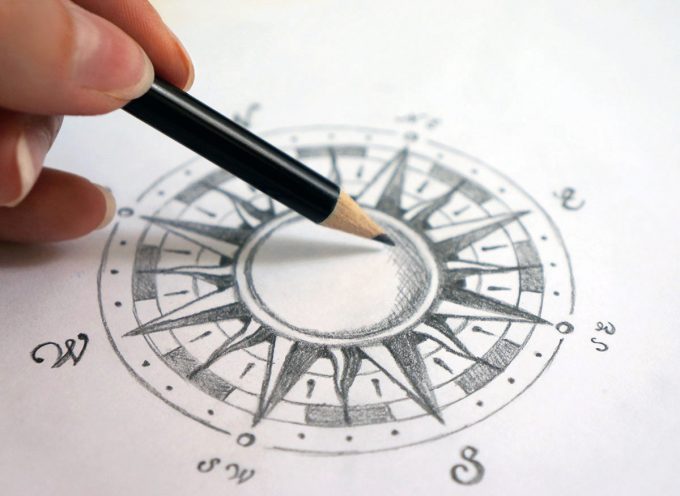
Vincenzo Maccarrone and Tommaso Pecchioli, of Officina Grafica, see themselves as actors in their line of work. The two graphic designers have a different approach when working with their clients. “When a company gives us their brief for a project, we look at it like a script. Our job is to put on a costume and interpret the roles they have set out for us.” And while the roles with which they are tasked are in the name of sales, there are other aspects to the work. What Pecchioli and Maccarrone consider key elements in designing a label is the ability to extrapolate the sensations that a customer feels when choosing a bottle and convey them in the design, in an attempt to extend the emotion of a purchase after the cash has been exchanged.
The philosophy behind the work of Caterina de Renzis Sonnino and her eponymous design and marketing agency runs in a parallel vein. There must be, she says, a concept behind an image, which will strengthen the wine’s possibility of being communicated. “What are needed are a story—because a story is always fascinating and draws in the consumer—and the skills to produce an image and a packaging that the producer wants, because in the end, if you provide something that isn’t right for the producer, it will be difficult for them to sell their product.”
It is this art that lies at the heart of designing a label. Simonetta Doni, of Doni & Associati, explains, “What’s difficult is not only making a beautiful label, but the right label that can communicate the company, the land, the wine itself.” She compares it to wearing the wrong dress for a night out and a day in the countryside. Why wear an evening gown in the mud? Her analogy isn’t far off. In the world of wine, earth is key, and it’s no different when designing a label. Though we might not envision graphic designers getting their hands dirty in the soil when researching a project, that’s exactly what they do.
In Doni’s opinion, there are two aspects to creating a wine label. The first is that designers need to have an idea of what wine is. The job, she believes, is deeply intertwined with understanding the wine world. Without knowing the ins and outs of the industry, the designer is blindly creating something that, whilst maybe compiling with the guidelines set out by the client, ultimately fails to convey the full story. For Doni, this means meeting enologists, going to the vineyards, getting her hands dirty. De Renzis Sonnino follows this line of thought too. Married to a wine producer and vaunting a social circle of top-tier names from the Italian wine world, she is firmly on the inside. “I know what wine marketing means, how to introduce a product onto the market {…} I keep these things in mind when I’m designing a label,” such as the ones she’s done for Antinori Pian delle Vigne.
It is imperative for graphic designers to conduct research when they start devising a wine label. Likening it to an investigator, Doni recounts how, at times, she has found herself digging through a company’s archives, sifting through centuries-old documents in search of the spark that will allow her to communicate the winery, its history and the elements that have inspired the wine that makes its way to our table.
This bond with the land and its heritage is a defining element for wine and their labels. An example can be found in Officina Grafica’s recent project for the winery Cantine Leonardo da Vinci, which has produced a wine for the 500th anniversary of the Renaissance polymath’s death. For this label, every element was designed with the hands in mind, Leonardo’s greatest tool: a lacquer seal, a leather string that needs to be untied to read the label and a parchment-like etichetta torn manually that conceals the genius’s study of hands. This same attention to history can be seen in the labels Doni & Associati design each year for Frescobaldi’s Gorgona, a Vermentino and Ansonica blend made by inmates at the Tuscan island penitentiary. Now in its sixth year, the label is crafted in the style of a newspaper, its text—which changes every year—narrating the everyday life of the island.
In the end, this is what matters most when designing a label: capturing the essence of the wine and all the elements that go into its creation, from history to human experience. As de Renzis Sonnino puts it, “A label made for a wow factor doesn’t serve any purpose. You might think it’s amazing, but after a year or two it’s old news. The challenge lies in being innovative while maintaining an element of elegance.”
Bottling brilliance
In recent years, several wineries have brought artists on board to fashion their labels. Here’s a closer look at a few of these innovative projects.
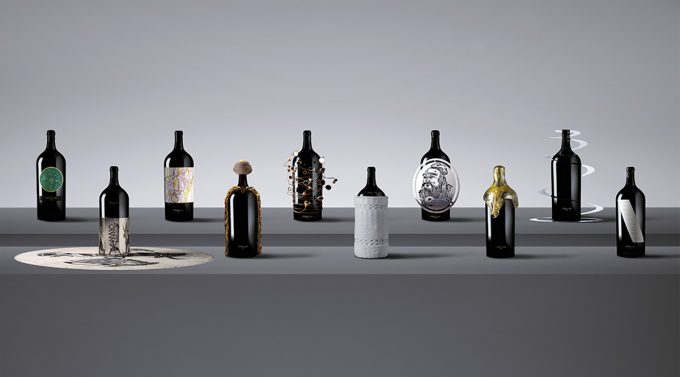
BOLGHERI / For the past ten years, Ornellaia has commissioned contemporary artists to create a series of limited-edition labels for each vintage, taking inspiration from a theme-word chosen by the winemaker to describe that year’s character. With just one special edition label per box and 111 large-size bottles released, the labels have become a prized possession sought by collectors all over the world. The most recent honour was given to the New York-based artist Shirin Neshat, who was asked to interpret the term “tension”.
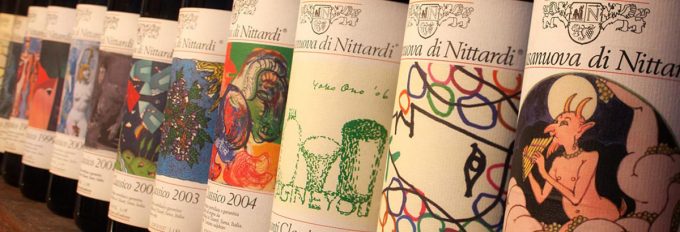
CHIANTI CLASSICO / Following in the footsteps of the former owner Michelangelo Buonarroti, Nittardi has always had art running through its vinous veins. The Chianti Classico winery has been collaborating with international artists since 1981, inviting them to style the label and tissue paper wrapping for its Casanuova di Nittardi Vigna Doghessa single-vineyard. These whimsical designs have been crafted by artists by the likes of Mimmo Paladino, Yoko Ono, Alain Clément and Bruno Bruni. The 2016 edition styled by British pop artist Allen Jones.
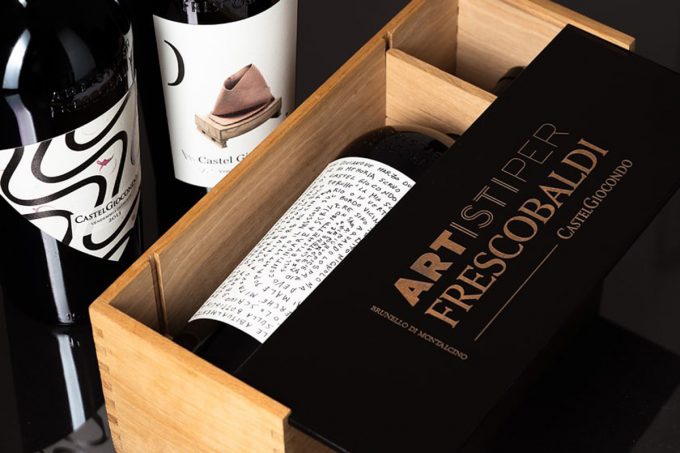
MONTALCINO / The bi-annual prize Artisti per Frescobaldi was established in 2012 in honour of the tradition of patronage that has defined the Frescobaldi family for centuries. Ludovico Pratesi and Tiziana Frescobaldi, curator and founder of the contest, invite three artists to design a label for a limited, numbered edition of the winery’s CastelGiocondo Brunello di Montalcino. A portion of the sale proceeds are used to support contemporary Italian art. The 2018 edition saw the involvement of artists Claudia Comte, Sonia Kacem and Francesco Arena.


